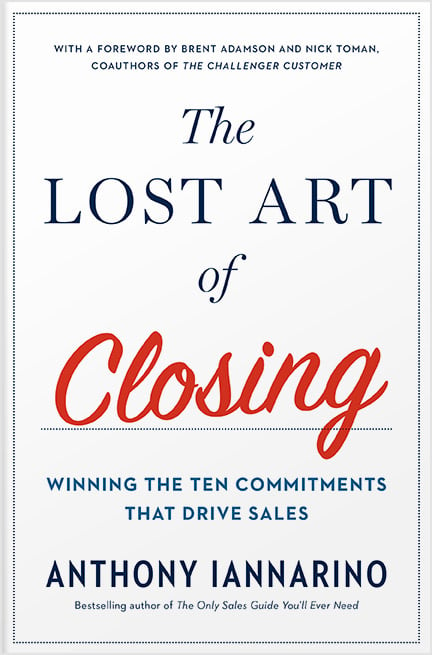In Eat Their Lunch: Winning Customers Away from Your Competition, I wrote a chapter on Capturing Mindshare, or building and supporting a general theory about why your dream client should change. That section is practical and tactical, and it is also what is necessary for B2B sales now. You have to do the work develop business acumen and the kind of theory you’ll find in that chapter. The following section is about Building a Pursuit Plan and Nurture campaigns. In this chapter, I recommend you pursue and nurture 60 dream clients.Win customers away from your competition. Check out Eat Their Lunch
When people read that chapter, they send me technical questions. The question I hear most often is, “Do you think 60 is too many?” The question is evidence the person asking believes it is too many. Let’s look at their concerns.
- Too Many to Manage Effectively: The number 60 is a relatively large number. Some people worry that it will be challenging to manage that large number of dream clients. Some are not certain of the mechanics, and others believe it may be too much work. While I don’t recommend communicating with each of the 60 once a month, that would require three phone calls a day, five days a week, for four weeks. That would be the most persistent and consistent most salespeople have ever been in their entire sales life. Your CRM already allows for lists to manage the process.
- Too Many to Be Personal: Others worry about the approach not being personal enough, which is to get this strategy backward in some ways. You start with a general theory and get more specific as you engage with your dream client. The outcome of this strategy is to make a broad enough compelling case to explore change that you acquire a meeting. Even though this is true, I wouldn’t support doing enough research to make it specific, if that’s possible. If you can read mandated financial reports and disclosures, you can improve your theory with greater specificity. An excellent general theory is enough for prospecting and nurturing.
- Lack of Discipline: Most people will not speak this objection, but I intuit it from their questions. It takes time and effort over a more extended period than most people have ever considered when it comes to prospecting. It is difficult to commit to a long-term plan, which is why so few ever do. The approach requires disciplined action over time, and that may be a large part of why it works.
Why 60 Is the Right Number
Here is the case for pursuing and nurturing 60 dream clients.
Sample Size Too Small
I have seen salespeople try this strategy with a list of three, or six, or ten clients without great success. While you are trying to compel your dream client to explore change, a small number is problematic. If your dream clients are locked in multi-year contracts (and some of them will be), you can go a year pursuing three to six prospects without a result.
A more extensive list provides you with more variation when it comes to where your dream clients are in the process of exploring change. You have a better chance of capturing the attention of stakeholders whom Rackham would describe as having “latent dissatisfaction,” those who are closer to being compelled to change. The number 60 is large enough to provide a cross-section of stakeholders, some of whom will engage and explore change.No more pushy sales tactics. The Lost Art of Closing shows you how to proactively lead your customer and close your sales. 
Long Sales Cycle Play
The strategy I proposed is a long sales cycle play. It is designed to shorten the time it takes to get the first meeting using insights that create an opening to explore change. This strategy comes from the need to proactively create a case for change when your dream client has a partner in place and has learned to live with their flaws. If I were to design this strategy for a company with a shorter sales cycle, I would reduce the number of clients and increase the amount of activity. The longer the sales cycle, the more critical it is to develop a pursuit plan and nurture campaign over time.
I learned this lesson the hard way by waiting for long periods before trying a dream client, only to discover they changed partners. Sadly, I wasn’t part of that conversation. I believed that when a client just signed a contract, it would be years before they changed again. Often, I was wrong. When you give up and go away, you miss opportunities.
Cross Section of Verticals
One of the benefits of this approach is that you can pursue verticals. If you split your sixty dream clients into four lists, you can make a single list of fifteen for four different verticals. The research you conduct on one vertical provides a theory and nurture content for fifteen of your dream clients. This approach allows you to make it relevant, without having to spend more time than is necessary.
If a vertical is declining, you can develop a theory as to how to improve their results as things get more difficult for them. If the vertical is growing, you can develop a functional argument as to how to improve, accelerate, or sustain that growth. In both of these circumstances, there is often a higher likelihood to change.
Building Insights
Too many salespeople still believe the value they create is found in their product, or service, or solution. Because they take what we call a “Level 1 Value” approach, they struggle to create a compelling case to change. By starting at the lower end of the spectrum, they are mostly irrelevant because they aren’t solving a big enough problem. The approach here requires you to monitor what is going to impact your dream clients now or in the not-to-distant future. You have to work on your business acumen, your situational awareness, and your ability to create a more strategic level of value (Level 4 Value).
Doing the work to execute this plan helps to make it possible to have a conversation about why your dream client should explore change now, a conversation that might take months to schedule, but will surely take less time to acquire than a sporadic, undisciplined approach.











